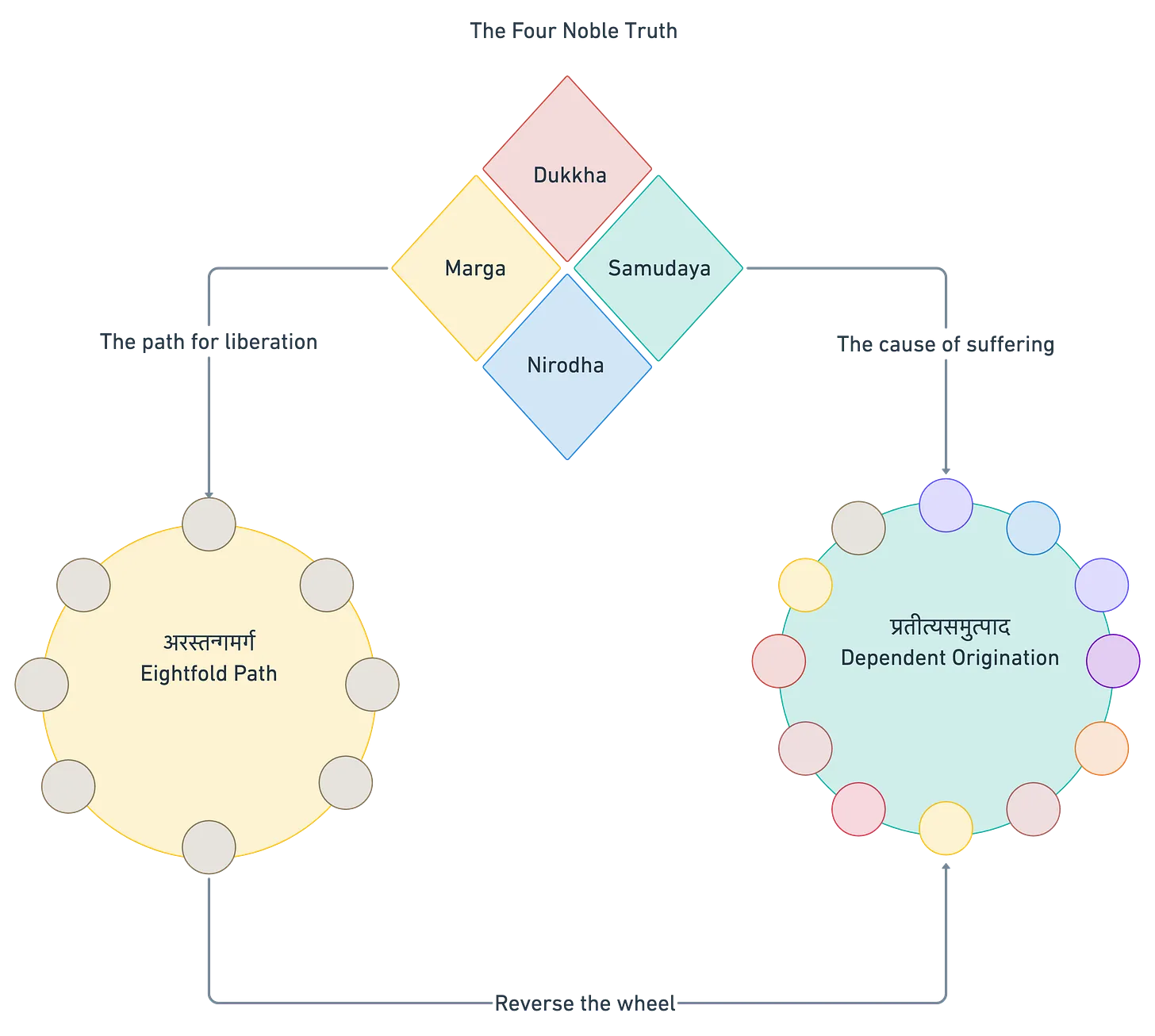Doctrines of Buddhism
Buddhist Philosophy
1. Introduction
- Buddhism (Bauddha Darshana) is a significant non-Vedic philosophical system.
- Founder: Gautama Buddha (historical figure, 6th-5th century BCE).
- Focus: Means of ending suffering for all individuals.
2. Buddha's Journey
- Raised as a prince.
- Encountered suffering (sickness, death, old age), leading to his quest.
- Result: Teachings of the Buddha and Buddhism.
3. Two Forms of Modern Buddhism
- Mahayana (Northern): Nepal, Tibet, China, etc.
- Theravada (Southern): Sri Lanka, Southeast Asia (Cambodia, Laos, etc.).
4. Buddhist Scriptures
- Non-Vedic tradition but has scriptures.
- Canonical works: Tipitaka (Pali) or Tripitaka (Sanskrit), meaning "Three Baskets":
- Vinaya Pitaka: Discipline of the sangha (monastic rules).
- Sutta Pitaka: Compilation of Buddha's actual utterances.
- Abhidhamma Pitaka: Philosophical discussions.
5. The Four Noble Truths (Chattari-ariya-saccani)
- Summary of Buddhism:
- Dukkha (Suffering): There is suffering.
- Samudaya (Cause of Suffering): There is a cause for suffering.
- Nirodha (Cessation of Suffering): There is an end to suffering.
- Magga (Path to Cessation): There is a path that leads to the end of suffering.
6. Elaboration of the Four Noble Truths
- 1st Noble Truth (Suffering): Universal experience of suffering.
-
2nd Noble Truth (Cause of Suffering):
- Suffering is not random, it has a cause.
- Root cause seen through the cycle of pratityasamutpada (dependent origination).
-
3rd Noble Truth (Cessation of Suffering):
- An end to suffering is possible by complete cessation of "thirst".
- Thirst: Desire for engagement in worldly activities.
- An end to suffering is possible by complete cessation of "thirst".
-
4th Noble Truth (Path to Cessation):
- 8-Fold Path to lead a moral life and achieve liberation.
7. The Cycle of Suffering (Bhavachakra)
- Root cause of suffering is identified:
- Old age and death → Rebirth → Tendency to be born (clinging to enjoyment) → Thirst for enjoyment → Sense experience → Contact with objects → Sense Organs → Particular Body & Mind → Consciousness → Impressions of Previous Life
- Each is dependent on the previous, thereby propagating the cycle.
- Old age and death → Rebirth → Tendency to be born (clinging to enjoyment) → Thirst for enjoyment → Sense experience → Contact with objects → Sense Organs → Particular Body & Mind → Consciousness → Impressions of Previous Life
8. Analysis of the Cycle
-
Thirst for Enjoyment:
- Derived from sense experience.
-
Sense Experience:
- Arises from contact with objects.
-
Contact with Objects:
- Due to the existence of sense organs.
-
Sense Organs:
- Present because of a particular physical & mental constitution.
-
Constitution (Body & Mind):
- Results from the manifestation of consciousness.
-
Consciousness:
- Arises due to impressions ( samskara) from previous birth.
-
Samskara:
- Stamps of experiences on the consciousness.
- Arise from ignorance.
9. Shared Beliefs & Key to Cessation
10. Nirvana
- State of moksha or complete cessation of suffering.
- Involves realizing the momentary nature of reality (Kshanika).
- Things are changing at every moment.
- Achieved by separation from worldly activities and the 5 skandhas.
- What we call self/body is made up of aggregates of 5 things (Skandhas) * Rupa: Matter. * Vedana: Emotion/feeling. * Samjna: Perceptions/precepts. * Samskara: Dispositions. * Vijnana: Consciousness.
11. The 8-Fold Path to Nirvana
- The path for cessation of suffering.
- Samyag Dristi: Right Faith.
- Samyag Sankalpa: Right Resolve.
- Samyag Vak: Right Speech.
- Samyag Karmanta: Right Action.
- Samyag Ajiva: Right Living.
- Samyag Vyayama: Right Effort.
- Samyag Smriti: Right Thought.
-
Samyag Samadhi: Right Concentration.
- Overlaps with the concept of Yoga.

